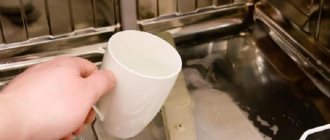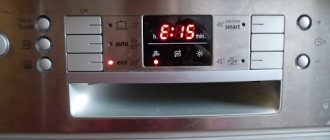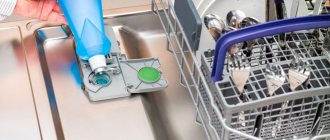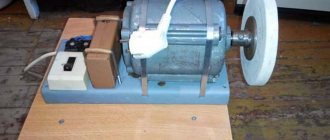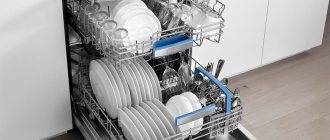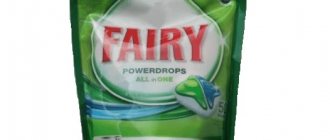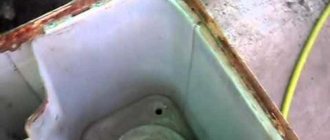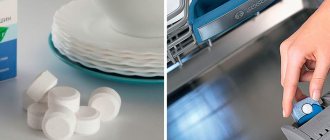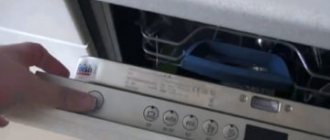Owners of dishwashers (hereinafter also referred to as PMM, dishwashers) sooner or later are faced with the fact that they have to spend substantial sums of money on the purchase of chemicals for the dishwasher. Therefore, many are interested in whether it is possible to make dishwasher tablets with your own hands as a cheaper alternative. The urgency of the problem is added by the fact that the “all-in-one” tablets offered to customers in stores contain substances that are harmful to health.
Dishwasher tablets available in retail stores
The composition of industrial tablets contains: chlorine, formaldehyde, phosphates and even hydrochloric acid. How to replace dishwasher tablets? Below are recipes for making homemade “homemade” tablets that can successfully replace store-bought products. At the same time, their cost is several times less.
Products based on washing powder
The idea is to use laundry detergent for children's clothes and linen as a detergent. This powder is harmless and has hypoallergenic qualities.
Prepare and mix the following ingredients in a certain proportion:
- children's washing powder intended for automatic washing, for example “Ushasty Nyan” - 4 cups;
- soda ash - 1.5 cups;
- any liquid intended for hand washing dishes - 5 tablespoons;
- water – 50 ml (1/4 cup).
Washing powder for all types of laundry “Ushasty Nyan”
the resulting mixture, which looks like a thick paste , into small molds. The main thing is that their size is not too large and the workpieces can subsequently be placed in the bunker. Then wait until the slurry dries to form briquettes. You can effectively wash dishes with homemade “bricks” without fear for your health.
To prepare tablets according to this recipe, you will need soda ash; baking soda will not work.
Even when using all-in-one tablets, it is necessary to add special salt to the hopper, otherwise the tap water will not soften to the desired level. The same applies to the rinse aid - in any case, it is advisable to pour it into the container provided for this purpose.
Read our article about how much salt you need to put in the dishwasher.
What to wash dishes with?
A dishwasher saves us from fussing with dishes, but it does not protect us from contact with harmful substances. When washing dishes in a dishwasher (DMM), various “chemicals” are used:
- powders or gels;
- rinse aid;
- universal three-in-one tablets.
Tablets are especially convenient; they contain everything you need - detergent, rinse aid and salt for water softening. It turns out that at home you can make a homemade composition for PMM, which is safe and quite effective.
Briquettes based on soda ash
Experienced housewives often use the following successful combination of several ingredients, resulting in a good composition for washing cutlery:
- soda ash - 3 cups;
- table/Epsom salt (magnesia) – 1.5 cups;
- citric acid – 0.5 cups;
- manual dishwashing liquid - 3 tablespoons;
- water – 1 glass.
Before mixing, the soda ash must be heated in a clean frying pan for 15 minutes, stirring occasionally. Only after this can you add the remaining components. Then the mixture is distributed into molds and waited until it dries.
Citric acid is a popular cleaning agent.
Advantages
There are five of the most effective proven recipes for folk remedies suitable for processing kitchen utensils. Why is it worth using a folk invention rather than using a gel that is sold in a store? There are several reasons:
- This is a very economical option. The cost of any homemade product does not exceed 100 rubles, and its volume will last for several months.
- If it runs out, then don’t run to the store. You can create a cleaning ingredient at any time.
- The composition can be changed independently, depending on your own preferences.
- This is an excellent option for those housewives who care about their health. She will see for herself what is included in it. You will be sure that there are no chemical additives in it.
Baking soda tablets
There is another elementary recipe, the ingredients for which can be found in almost any kitchen. Prepare the following ingredients:
- baking soda – 2 cups;
- table salt – 1 glass;
- citric acid – 0.5 cups;
- water – 1 glass.
You can also make “bricks” for dishwashers using baking soda.
One glass of soda is heated, for which it is placed in the oven on a baking sheet at a temperature of +200 ℃. You need to heat for 30 minutes, stirring. Then all the ingredients except water are added to the hot soda. When the dry mixture is ready, add a glass of water to it in parts, avoiding too much foaming. The resulting slurry is distributed into molds in a warm place and allowed to dry.
Recipe No. citric acid
There is another universal recipe for making detergent. To prepare it you need to mix the following ingredients:
- soda – 200 gr.
- borax -150 gr.
- sodium sulfate -500 gr.
- citric acid – 100 gr.
It is necessary to connect all components and move them carefully. This powder can be used to make tablets that can be used to clean kitchen appliances in the dishwasher. You can also dilute it with a small amount of water to make a liquid mixture.
It is preferable to use tablets rather than a liquid mixture. They are less aggressive and will remove plaque more carefully.
Composition based on magnesium
Magnesia, or Epsom salt, successfully washes even the dirtiest dishes. Based on it, you can make a mixture by adding several other components in the following proportions:
- Magnesia/Epsom salt/Epsom salt – 2.5 cups;
- soda ash – 1 cup;
- sodium tetraborate (borax) – 1 glass;
- citric acid – 0.5 cups;
- liquid/gel for washing dishes – 4 tbsp. l.;
- water – 1 glass.
Sodium tetraborate can be purchased in such packages
Borax and Epsom salts can be purchased at pharmacies; these components are inexpensive. Dissolve citric acid in water. Mix the remaining dry ingredients thoroughly. Add the acid solution to the dry mixture, avoiding too violent a chemical reaction. Mix all the ingredients well, distribute the resulting slurry into the molds and wait until it dries.
The better all the components are mixed, the better the homemade tablets will wash tableware.
Preparing the detergent
Most dishwashing powders and other detergents are made from active chemicals that cause them to foam upon contact with water. In addition, they include a variety of acidic substances that help eat away fat and other similar additional elements that have similar properties:
- bleaches;
- sodium silicates, which prevent corrosion of metal elements;
- various enzymes;
- thickening agents;
- and others.
As you already understood, it is not known how safe they are for the human body. Of course, in small quantities they can be harmless to the body. But now we’ll talk about whether it’s possible to make a dishwasher cleaner with your own hands that does not contain the above elements.
Method No. 1
Take one glass of hot water and dissolve a teaspoon of soda ash in it and then add hydrogen peroxide in the same volume. This detergent may not be able to clean burnt-on pots and pans, but it can easily wash regular dishes, cutlery, and other items. The most important thing is that when you use this product, be sure to use salt along with it.
Method number 2
The next detergent can be prepared using mustard powder, as it foams well and can wash away grease. For this we need:
- 100 grams of mustard powder;
- boron in the same volume;
- a full glass of soda ash.
This mixture is best stored in a dark place and in a container that does not allow light to pass through. However, some dishwasher users who used mustard mixture as a detergent had problems due to the fact that the powder did not dissolve well in an aqueous environment, which caused it to clog the nozzles, but everything may depend on the quality of the mustard itself. In addition, there is a small plus in that the powder mixture can be used for washing dishes by hand.
Method number 3
This detergent can be called economical, but it still uses active chemical elements. But their concentration in the product is negligible; they cannot harm your body, except if you are allergic to these elements.
To make such a dishwasher detergent with your own hands, you will need the following:
- neonol – 25 grams;
- sulfanol – 25 grams;
- baking soda or ash soda - 950 grams.
The first chemical elements are designed to ensure that the detergent foams well upon contact with water. This product is based on soda, since 30 grams of powder are loaded into the washing machine per dishwasher, and it is not advisable to add 1.5 to 2 grams of active elements.
It is well suited for use in so-called “soft water”, but for “hard” water, it is necessary to add a small amount of salts to this solution.
See also -
What is included in the dishwasher set?
Method number 4
Now we will tell you how to make a “tablet” with your own hands. They are the most popular detergents for dishwashers, but they are quite expensive, so a solution was invented to create something similar to them. To create a “tablet” you will need the following elements:
- regular washing powder – 350 grams;
- regular or soda ash – 150 grams;
- ordinary water, as an element for the formation of bonds.
Now take a small container and mix the dry ingredients in it, gradually adding water, you should get some kind of “porridge”. After you achieve a thick consistency, take molds and pour it there (for example, ice molds and similar things).
Advantages of homemade briquettes for the dishwasher
Why is it more profitable to prepare universal dishwashing detergents with your own hands? Firstly, they are much cleaner in environmental terms and do not contain substances harmful to humans, unlike the “secret” compositions of tablets produced by industry. Secondly, simple calculations show that one briquette made in the kitchen costs 4-5 times less than a store-bought one .
Dishwashing detergents that can be bought in stores are easy to use, but expensive
It only takes 15-20 minutes to make dishwasher detergent with your own hands; the rest of the time they dry in a warm room. The tablets are then stored in a dry and dark place. They can be used for six months, during which time the briquettes will not lose their basic properties. Once dried, the small “bricks” do not fall apart or crumble.
Regular use of self-made detergent compositions does not negatively affect the operation of the PMM. The surface of the dishes is washed clean, and after rinsing there are no streaks or stains left.
So, making universal briquettes for dishwashers with your own hands is very profitable. Compared to industrial household chemicals, such products have practically no disadvantages, but there are enough advantages.
What is included in industrial tablets?
By actively advertising the harmlessness of their products, manufacturers are being disingenuous. The briquettes offered may contain chlorine-containing substances that are harmful to health. In addition, sodium carbonate is added to the tablets during the manufacturing process to soften the water. Why is it needed if softening salt is poured into a special bunker?
In purchased tablets you can find up to 3-4 components used to soften water and prevent scale formation. For example, these:
- sodium disilicate - successfully replaces phosphates used to soften water in washing powders;
- sodium gluconate – softens water and reduces scale formation;
- ethylenediaminetetraacetic acid – prevents scale formation.
The composition of briquettes usually includes harmful surfactants (surfactants), which bind fat molecules, removing it from the surface of the dishes. Whereas when making homemade products for dishwashers (hereinafter also referred to as dishwashers, PMM), you can avoid many harmful industrial additives.
Flaws
There are several disadvantages to using a homemade liquid consistency.
- It is more convenient to use a purchased product. It is enough to open the cap and pour the required amount of liquid into the specialized compartment. Accordingly, the user does not have to spend his personal time preparing it.
- It is not always possible to invent a high-quality product. An incorrectly created composition may leave residue or impurities may not be washed off well.
- The resulting consistency may not look aesthetically pleasing.
- When using certain ingredients, such as mustard, cutlery often leaves an unpleasant odor when it comes out of the dishwasher.
- The most important disadvantage is the possibility of equipment damage if the composition is not mixed correctly and lumps form in it.
Should you make homemade dish detergent or buy it at the store? There is not and cannot be an exact answer to this question. Each housewife will independently determine what is more convenient for her to use, based on personal preferences, amount of free time and financial situation.
